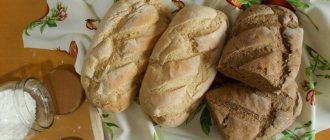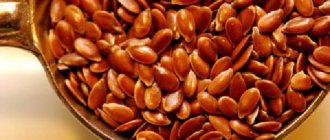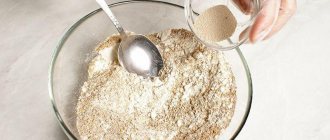Bran is a grain processing product consisting of the outer shells of grain crops. Bran contains fiber, an indigestible or insoluble fiber that reaches the large intestine unchanged. It is this property that has made the use of bran popular for constipation.
The product is considered one of the main sources of dietary fiber. Depending on the culture from which the fibers are obtained, the following types are distinguished:
- buckwheat;
- oatmeal;
- rice;
- barley;
- rye;
- wheat
A production by-product can remain after the grains are cleaned and after the flour is produced. Bran can be sold unchanged or as part of dietary supplements. The product is used for baking bread - its quantity is determined by the type of flour.
You've probably heard that nutritionists recommend eating wholemeal bread: it is made from low-refined flour. If there are no impurities in premium flour, then grade 1-2 requires the presence of a certain amount of coarse particles.
Your doctor may recommend using bran in its pure form or as part of biological food additives. They help cope with functional constipation and can be prescribed to people who consume insufficient amounts of dietary fiber in foods due to health conditions, taste preferences or eating conditions. For example, if eating large amounts of vegetables and fruits containing insoluble fiber is impossible due to food allergies or other characteristics, bran can partly compensate for this.
Bran contains both fiber and substances beneficial to the body. Insoluble fibers can be components of medications and dietary supplements used to normalize intestinal function. But bran and laxatives of this type are not interchangeable. Let us dwell in more detail on the composition and properties of bran.
Composition and properties
Bran is a waste product from the processing of cereal crops. According to researcher V. A. Grigorieva, “they contain 25–30% fiber, consisting of cellulose, hemicellulose and lignin polymer” (V. A. Grigorieva, 2003, p. 12).
Insoluble fiber is delivered to the colon unchanged, undigested. They are able to retain water, which increases the volume of stool, makes it homogeneous, and stimulates normal stool. It is believed that this is the most physiological and natural way to combat chronic constipation.
The effect of bran on the intestines can be compared to a brush: they are highly hydrophilic, absorb water, toxins, mechanically stimulate the intestinal walls and improve peristalsis. Bran is fermented by colon bacteria, so it can improve microflora and correct vitamin deficiencies.
Regular consumption of dietary fiber not only prevents constipation, but also improves the structure of the intestinal mucosa, maintains the health of the digestive system, and prevents inflammatory and other diseases.
The main beneficial characteristics of insoluble fibers in bran include:
- the ability to act as a beneficial nutrient medium for normal intestinal bacteria;
- lowering cholesterol levels and preventing atherosclerosis, heart and vascular diseases;
- blood sugar control;
- participation in detoxification processes, removal of harmful substances;
- improving intestinal motility and effectively combating constipation.
Therefore, the use of bran can indirectly affect the prevention of other diseases. The use of bran for constipation in adults helps prevent diseases such as hemorrhoids, anal fissures and other complications of chronic stool retention.
100 grams of raw oat bran contains about 15 grams of insoluble fiber, which is more than half the daily requirement. According to researcher A.I. Parfenov, “to ensure normal intestinal function, 20–35 g of fiber are needed daily” (A.I. Parfenov, 2011, p. 1746). This corresponds to approximately one kilogram of fresh fruits and vegetables.
It is important to understand that consuming this amount of food can be difficult, especially if we are talking about the average person who spends 8 hours at work. In this case, bran can become a real salvation for those who cannot adjust their diet.
It is important to remember that bran also contains insoluble fiber, which is no less useful for intestinal function. True, there are significantly fewer of them than insoluble ones. In addition, depending on the type of bran, they may include other beneficial substances:
- calcium and potassium;
- magnesium and iron;
- vitamins A, E, K, group B;
- amino acids histidine, arginine, etc.
Bran can become not only a tool in the fight against constipation, but also a source of a certain amount of nutrients. Maintaining health with bran can be recommended by a dietitian or therapist.
Operating principle
Parfenov believes that dietary fiber “is necessary for intestinal bacteria. As a result of microbial metabolism, short-chain fatty acids (SCFA) are formed, which retain water in the intestinal lumen and participate in the proliferation and differentiation of epithelial cells” (Parfenov A.I., 2011, p. 1746). The main mechanism of action of bran is that the insoluble fiber leads to water retention in the intestines. How does it work against constipation?
One of the mechanisms for the development of constipation is the loss of water from feces, as a result of which they become denser, compressed, and more difficult to pass through the intestines. Water retention in the intestinal lumen is one of the mechanisms by which some laxatives work. However, many of these drugs have quite a powerful effect, and the effect of their use is called drastic - diarrhea occurs, profuse and frequent watery stools appear.
Dietary fiber acts more gently: water retained in the intestinal lumen allows you to increase the volume of feces and make their consistency softer. In addition, the fibers mechanically stimulate muscle contraction, improving peristalsis. As a result, soft feces move faster through the intestines, and natural emptying occurs without mechanical obstacles in the form of dense feces.
Bran will help with constipation of a physiological nature, when stool retention is associated with eating habits, insufficient stimulation of motor skills, violation of the drinking regime, and a sedentary lifestyle.
Doctor Samsonov A.A. in his work indicates that “constipation develops in cases where fecal formation decreases to less than 100 g per day” (Samsonov A.A., 2012, p. 202). This may be due to the consumption of refined foods in small quantities. Bran increases the volume of feces by 50% when consumed in quantities of more than 22 grams per day.
In addition, dietary fiber literally absorbs toxins and removes them naturally, which helps fight intoxication caused by chronic constipation.
Industrial waste or valuable dietary food product
In fact, it is the shell (husk) of any grain. The following types of bran are most often sold in pharmacies and grocery supermarkets:
- Rye;
- Wheat;
- Corn;
- Rice;
- Buckwheat;
- Oatmeal.
At the beginning of the 20th century, they were considered waste from flour milling and were used only as livestock feed. But in the middle of that century the situation changed dramatically. Scientists have found that the content of various useful substances in them is much higher than in the grain itself. From that moment on, doctors began to actively recommend them as one of the components of dietary nutrition.
One of the conditions for successful treatment of gastritis of the stomach is adherence to a diet. The question naturally arises: is it possible to eat bran if you have gastritis, since they are currently considered a dietary product? And are there any contraindications to their use? Both questions can be answered in the affirmative. Yes, you can (even need to) eat bran for stomach gastritis; their benefits for the gastrointestinal tract are beyond doubt. And yes, there are still contraindications to their use. Let's look at both questions in more detail.
Benefits for the body with gastritis
Here is a short list of positive factors for the body from their use by people suffering from gastritis:
- Stimulate the gastrointestinal tract and help digest food;
- Able to absorb excess gastric juice;
- Normalize the composition of the gastrointestinal microflora;
- Promote faster recovery of the gastric mucosa;
- Qualitatively cleanses the gastrointestinal tract from waste, toxins and other harmful substances;
- Create a protective film on the walls of the stomach;
- Reduce pain during gastritis;
- Relieves gastritis constipation;
- Saturate the body with vitamins and microelements.
Important! For stomach inflammation, it is recommended to eat oat bran. This type of product has the most pronounced enveloping properties, which is a very important point in dietary nutrition for such pathologies.
Types of bran
Oatmeal
Before deciding which bran is best to use for constipation, it is important to take into account the individual characteristics of the body. Oatmeal has a neutral taste, so they are highly valued for their ability to be added to ready-made dishes and dairy products. It is better to choose loose bran rather than compressed bran - manufacturers may add a certain amount of flour to the latter.
Oat bran contains a large amount of vitamins and minerals: all B vitamins, as well as vitamins A, ascorbic acid, rutin, vitamins E, D and K. They contain lycopene, an organic compound with an antioxidant effect. This composition will help maintain the health and beauty of your skin and hair. Oat bran also contains minerals: iodine, iron, potassium, phosphorus, magnesium, calcium. This will also have a beneficial effect on the health of the musculoskeletal system, nervous system and other systems and organs.
Wheat
Researchers Parfenov, Ruchkina and Silvestrova in their scientific work indicate that “wheat bran is widely used for prevention and treatment” (Parfenov A.I., Ruchkina I.N., Silvestrova S.Yu., 2006, p. 109) .
Indeed, this is the most common recommendation in gastroenterological practice. This product contains not only insoluble fiber, but also calcium, potassium, magnesium, zinc, and manganese. Bran contains vitamin E, riboflavin and other B vitamins, as well as choline. This organic compound was previously called vitamin B4. The substance affects carbohydrate metabolism, has hepatoprotective properties, and is involved in the prevention of liver and kidney diseases.
Wheat bran also contains amino acids:
- Histidine, which promotes tissue growth and repair and is part of hemoglobin.
- Arginine, which is especially needed by children, adolescents and the elderly, is involved in anti-inflammatory processes and stimulates the normal functioning of blood vessels.
Rye
Rye bran is especially valued by those who want to lose weight. This is one of the lowest calorie types of product - only 220 kcal per 100 g. Rye bran for constipation can be recommended by both a gastroenterologist and a nutritionist. This bran contains a lot of potassium and calcium, magnesium, phosphorus, sodium, potassium, as well as trace elements - iodine, cobalt, manganese, copper, etc.
This type of bran contains the same vitamins as wheat and oat bran, but their composition differs in the presence of omega-3 and omega-6 polyunsaturated fatty acids. The latter are especially important in the prevention of many diseases, they can improve the functioning of the nervous system, participate in the prevention of many diseases and strengthen the body's defense mechanisms.
Rye bran also contains beta-glucan, a compound that binds fatty acids and reduces the level of so-called bad cholesterol. Therefore, in addition to the main action - treatment and prevention of constipation - the product has a lot of health-improving effects. Thus, it helps protect the heart and blood vessels, improves the functioning of the nervous system and digestive organs.
Get rid of intestinal problems
The natural British drug is not addictive and works immediately
Find Phytomucil with benefits
Indications and benefits
The benefits of bran for constipation can be very great, but this is not the only indication for their regular use. A doctor may recommend such a nutritional supplement for diabetes, obesity, certain skin diseases, weakened immunity, and high risks of developing atherosclerosis. The basis for the recommendation is considered to be high levels of cholesterol or glucose in the blood, some diseases of the liver and biliary tract.
Bran is indicated not only to eliminate existing intestinal problems, but also to prevent their development. For example, with a forced restriction of the diet, a new diet, the risks of developing constipation increase, and with the help of bran, the development of stool retention can be prevented.
The benefits of bran may include the following beneficial effects:
- normalization of blood sugar and cholesterol levels;
- detoxification of the body;
- prevention of diabetes and atherosclerosis;
- normalization of the functioning of the digestive system;
- stimulation of muscle growth and recovery;
- strengthening bone tissue;
- prevention of anemia;
- improvement of metabolic processes in the cells and tissues of the body.
Insoluble fiber is a substrate for beneficial bacteria in the gastrointestinal tract. Therefore, they can be used in the treatment and prevention of dysbiosis by improving the composition of the intestinal microflora. In addition, they stimulate the normal flow of bile.
Bran promotes long-term satiety and can reduce appetite, which means it can be used as part of comprehensive programs for weight loss and obesity prevention. The doctor may prescribe them if there is a forced limitation on the amount of food eaten, as well as if the patient consumes mainly unrefined foods that do not contain dietary fiber.
The use of bran is also relevant for people with allergic reactions that limit the possibility of including fresh vegetables, fruits and berries in the diet as the main source of dietary fiber in the diet.
When bran is contraindicated
The product is contraindicated:
- During exacerbation of the inflammatory process.
- For gastritis with low acidity. Digesting bran will create unwanted stress on the stomach.
Before consumption, you should consult your doctor. Only after the level of acidity and severity of the process has been clarified, cereal shells are added to the diet.
After treatment of inflammation, nutrition is expanded. Food should be balanced and saturate the body with microelements and vitamins.
Features of taking bran for constipation
It is better to ask your doctor how to take bran for constipation. Despite the fact that this is not a drug, there are a number of contraindications to their use. If you have already found out that there are no restrictions, your doctor will give recommendations on how to properly start introducing such a supplement into your diet.
The standard amount of bran for an adult is no more than 25-30 grams per day. This is about two tablespoons. Try to maintain the dosage and not exceed it to reduce the likelihood of side effects.
If you are taking medications, it is important to strictly follow the rule: wait at least three hours between taking the pill and consuming insoluble fiber. Fiber acts as a natural sorbent, so it can reduce the effectiveness of the drug if the interval is shorter.
We have prepared several general rules for using bran:
- Try to consume bran in the first half of the day. The best option is considered to be in the morning, before breakfast.
- Introduce bran carefully, start with 5 g - a heaped teaspoon. Observe the body’s reaction, and if everything is fine, gradually add a few grams to the norm.
- It is not necessary to consume 25-30 grams of bran; if your diet is expanded on some days and contains fresh vegetables and fruits, a reduction in the dosage is allowed.
The most important rule when consuming bran is to drink enough water. Moreover, if your norm is one and a half liters of fluid per day, an additional volume should be added to it.
Samsonov in his scientific work focuses on the fact that “the consumption of food bran must be accompanied by a sufficient amount of liquid (2-3 glasses to the patient’s usual water diet), on average up to 2 liters of liquid per day (in the absence of corresponding contraindications)” .
We are not talking about cases where so much liquid is contraindicated - in such situations the use of bran is also contraindicated. Since there is a high risk of disruption of intestinal transit and aggravation of existing problems with stool. Bran should never be consumed dry!
How to take bran correctly for constipation - in dry form or as part of dishes? This is purely a matter of taste. You can add them to your favorite dishes or eat them yourself. Many researchers say their benefits do not change across different methods.
Thus, Samsonov insists: “Bran should be added to first courses, porridges, salads, fermented milk products” (Samsonov A. A., 2012, p. 202). It is important to know that many manufacturers of fermented milk products produce products with already added cereals and bran - pay attention to the composition when purchasing.
The same researcher recommends first pouring boiling water over the bran, and consuming it only after 30-60 minutes as part of ready-made dishes. Moreover, the dose can vary from 1 to 8 tablespoons. When increasing the dosage, pay attention to your condition and individual reactions of the body - if flatulence and other digestive disorders occur, it is not recommended to increase the dose.
Who shouldn't eat bran?
Bran contains gluten, so it is contraindicated for people with celiac disease (protein intolerance). Patients with gastric and duodenal ulcers, gastritis and acute colitis should not take bran. You should also not use bran if you have an upset stomach.
Before you start consuming bran, consult your doctor, especially if you are taking medications. He will tell you how and in what doses you can best use this wonderful product so that it benefits you.
article from the site https://www.medsovet.info/articles/3069
Possible harm and contraindications
The use of bran may have certain consequences. For example, doctor Parfenov in his scientific work emphasizes that patients are reluctant to agree to the use of bran “due to flatulence, discomfort and increased formation of gases” (Parfenov A. I., 2011, p. 1746). Indeed, bran against constipation is effective in most cases, but can be a source of discomfort.
Researcher A. A. Samsonov speaks about this: “almost all patients who start taking dietary fiber, especially the elderly, experience temporary bloating, a feeling of rumbling, and pain due to increased gas formation during the first few weeks of their use. This effect is associated with excessive bacterial fermentation of fiber in the colon" (Samsonov A. A., 2012, p. 202). These effects are the main obstacle to the use of bran.
As for contraindications, they are quite strict: in some cases, bran can significantly worsen the condition and even cause serious complications. Limitations are represented by the following diseases and conditions:
- all diseases for which it is impossible to take a large volume of liquid per day, for example, kidney pathologies;
- organic pathology of the large intestine;
- high probability of intestinal obstruction, fecal impaction;
- old age;
- severe neurological diseases;
- bed rest;
- stool incontinence or high risk of developing incontinence (older age).
A relative contraindication is irritable bowel syndrome (IBS). According to some data, in a number of patients with IBS accompanied by constipation, bran can cause increased pain.
It is important to understand that insoluble dietary fiber causes unpleasant consequences more often than soluble fiber, and can sometimes worsen constipation. One of the best options for stool retention are bulk laxatives, which contain not only insoluble but also soluble fiber.
For example, “Fitomucil Norm” contains the shell of plantain seeds and the pulp of domestic plum fruits. Insoluble fibers gently stimulate intestinal motility, while soluble fibers absorb water and turn into a gel, providing a softening effect and helping to restore regular bowel movements. This allows you to speed up the process of excretion of feces, as well as make them softer. The product acts predictably and does not cause pain or bloating, as well as diarrhea or watery, frequent stools. In addition, Fitomucil Norm helps to normalize microflora and, as a result, restore normal functioning of the gastrointestinal tract on a long-term basis.
Bran for gastritis
Many lovers of cleansing the body with bran are often interested in the question: is it possible to eat bran if you have gastritis? An important condition for the treatment of gastritis is following a diet that is based on the consumption of easily digestible foods. Bran is often recommended for patients with gastritis, as it contains biologically active components and has a beneficial effect on the digestive tract. And although bran is a dietary product, it is recommended to use it during the lull of the disease. Therefore, before starting to use bran, it is necessary to consult a specialist, as well as study the composition and effects of this product on the body.
Recipes with bran
Water with honey and bran
This recipe is also suitable for people with stomach diseases. Need 4 tbsp. l. wheat or oat bran, pour 40 ml of hot water, leave to steep for 4 hours. Then stir, strain and squeeze, heat the finished infusion, add 1 tbsp. l. honey This infusion can be drunk an hour before breakfast.
Bran with beets
Beets have a laxative effect, so this combination of products can help relieve constipation. To prepare you will need 150 g of beets, 20 g of bran, 15 ml of flaxseed or other vegetable oil, salt to taste.
The bran should be poured with hot water for 30 minutes, and the remaining liquid should be drained. Peel the beets, grate them on a fine grater, mix with bran. To add flavor to the salad, you can add chopped herbs, salt, and use vegetable oil for dressing. This dish can be eaten warm or cold at any time of the day, or used as a side dish for the main dish.
Bran porridge with prunes
What rules are we talking about?
How to get the most out of food? Read the basic rules of use:
- It is not difficult to prepare bran for gastritis with high acidity. Pour boiling water over them and leave for half an hour.
- When eating, wash down the food with water. This contributes to the swelling of the product in the stomach, rapid saturation due to slow digestion.
- Bran is included in the menu in small portions. The recommended dosage is one teaspoon 2-3 times a day.
- Eat 30 grams of bran daily. This can be a product in its pure form or an additive for preparing other dishes. After a week, the dosage is increased to 2 spoons three times a day.
- The answer to the question whether bran can be used for gastritis is always positive. But if you neglect the above recommendations, you can get colitis.











